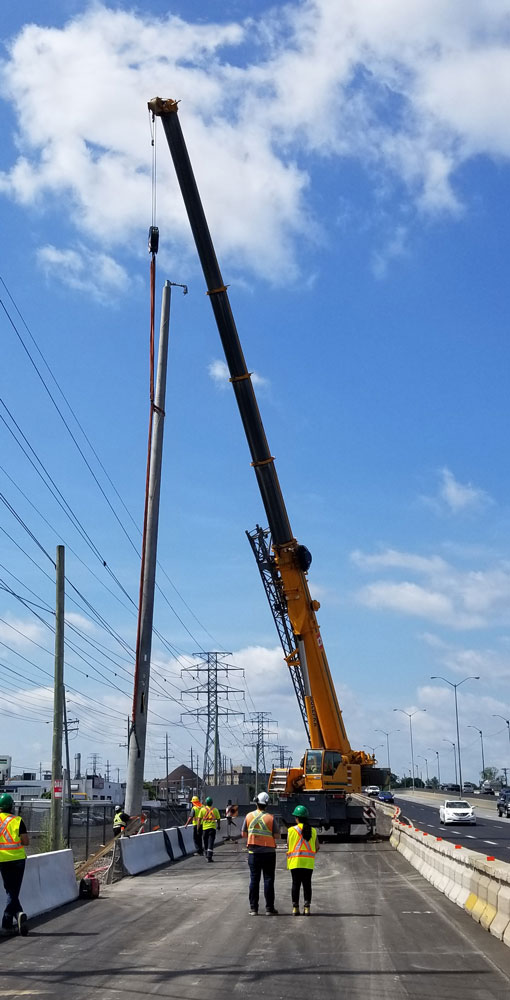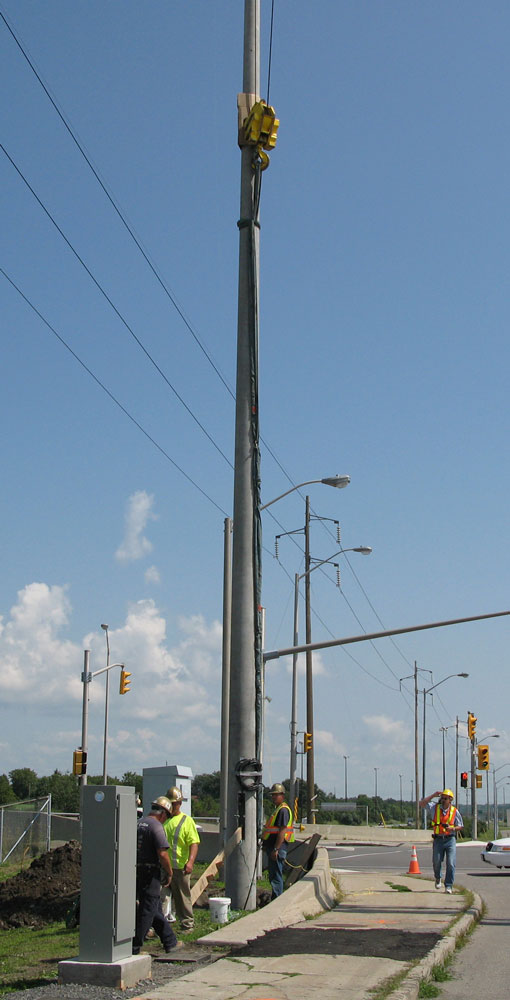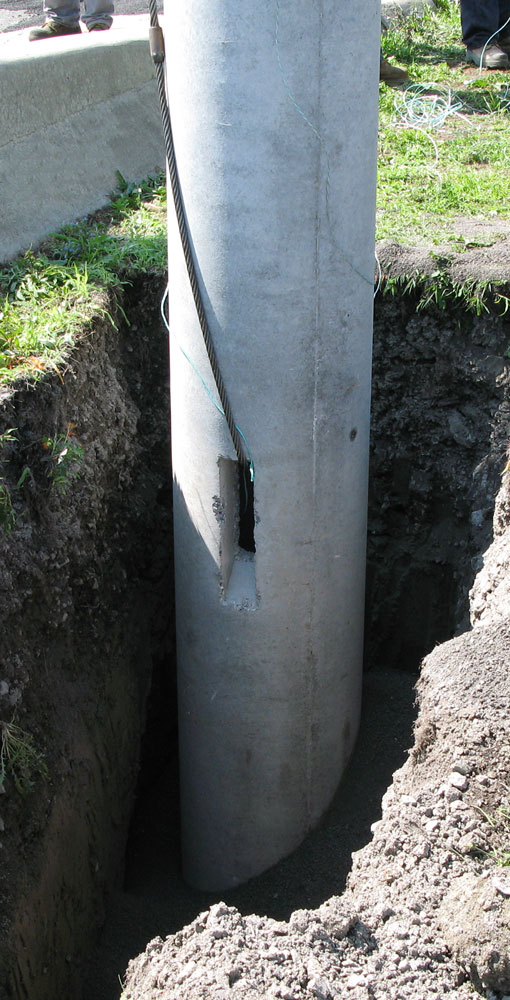Installation
Direct Embedment – Simple and Cost Effective!
The most common method and biggest advantage for installing a concrete pole is by direct embedment. The pole is placed into an augured hole lined with gravel then back filled with native soils, stone dust or cement – depending on the soil conditions.
Advantages of Direct Embedment
Cost savings
Eliminates the need for a costly anchor pole base footing.
Time savings
Faster installation, allowing more poles to be installed in less time.
Convenient
No reliance on weather, form work, or pouring schedules.
Strength
The pole and footing are continuous, forming a stronger structure.
Appearance
No exposed base plates or anchors bolts.
Environmental impact
Does not contaminate the soil, unlike direct buried wood poles which contain chemicals treatments.
Landscaping
The surrounding ground (grass, concrete, asphalt, etc.) can be finished right up to the edge of the pole.
Maintenance free
Can be placed into the ground without the fear of rust or rot.



Direct Embedment Installation Guidelines

Calculating the Depth of the Pole
Poles are typically set into the ground: 10% of the overall height + 2 feet, except in questionable soil conditions.
Example: Overall pole height: 30 feet, the pole should be buried: 3 feet + 2 feet = 5 feet below grade, and 25 feet above grade.
Note: always consult an engineer and review the soils report.
Calculating the Diameter and the Length of the Hole
Auger hole minimum 10 inches larger than the butt diameter of the pole, and an extra 6 inches deeper then the depth requirement.
Example: Overall pole height is: 35 feet and butt diameter is 14 inches, auger the hole Min: 24 inches in diameter and the depth 6 feet.
Depth Calculation: 35 feet X 10% = 3 feet, 6 inches plus 2 feet = 5 feet, 6 inches plus 6 inches for GA base = a total of 6 feet of augured depth.
Download Direct Embedment Installation PDF file